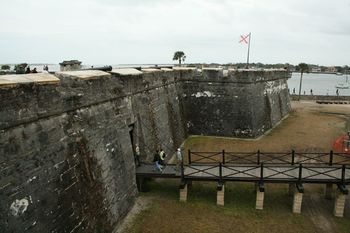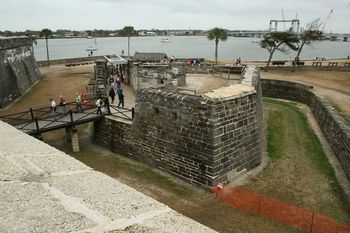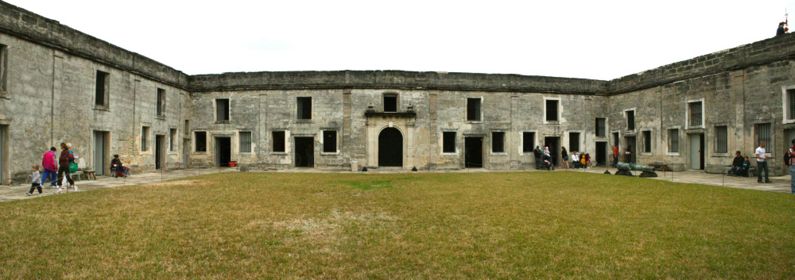Castillo de San Marcos
|
Castillo de San Marcos (1672-1900) - A Spanish coastal fort established in 1672 at St. Augustine, St. Johns County, Florida. Abandoned in 1900. Also known as Fort Marion.
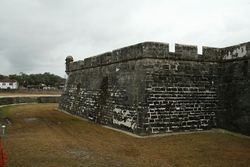 The Castillo de San Marcos is a masonry star fort built up over a number of years to have four named full bastions, San Pedro, San Agustín, San Carlos, San Pablo and a significant ravelin protecting the sally port. The 35' high walls were surrounded by a wet moat and earthworks. The walls were constructed of coquina stone, a local stone made of shells that is similar to limestone. The stone was quarried on Anastasia Island and shipped to the fort by boat. This stone has a significant quality in that it could absorb shell fire without significant damage. The central court was a two-story quadrangle with four almost equal sides of about 110' with casemates on the lower level. The upper-level gun decks were supported by arches.
First Spanish Period (1672-1763)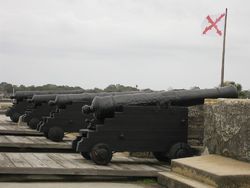 Construction began in 1672 and was completed in 1695, making it the oldest masonry fort in the United States. In November 1702 the British laid siege to the city. All of the city's residents gathered inside the fort walls during the siege. The Spanish fleet arrived and broke the siege by trapping the British in the bay. The British were forced to abandon and burn their ships to keep them from being captured by the Spanish. They burned St. Augustine as they withdrew back to the Carolinas. In 1739 the British declared war on Spain. British General James Oglethorpe captured nearby Spanish Fort San Diego, Fort Pupo, Fort Picolata and Fort Mose and laid siege to the Castillo de San Marcos and the city of St. Augustine. The coquina walls withstood British bombardment and, after 38 days, the British withdrew.
British Period (1763-1783)In the Treaty of Paris (1763) the Spanish ceded Florida to the British and Castillo de San Marcos became a British Fort. The fort was renamed by the British as Fort St. Mark and further improved. Second Spanish Period (1783-1821)With the Treaty of Paris (1783) control of Florida returned to the Spanish and the fort was returned to its original name. U.S. Period (1821-1900)The Adams-Onis Treaty gave control of Florida to the United States and the fort was again renamed as Fort Marion in 1825. In October 1837 the Seminole Indian Chief, Osceola was captured and imprisoned in Fort Marion for two months along with 203 tribe members. In December 1837 he was moved to Fort Moultrie where he later died. 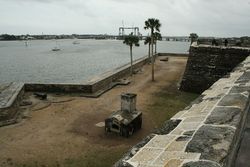 The fort remained a part of the U.S. Coast Defense from 1844 to 1866. The east moat was transformed into a Second System water battery during this period. In 1875-1878 the fort was again used as a prison for several hundred plains Indians including Comanche, Cheyenne, Kiowa, and Arapahoes. In 1886-1887 it was used to imprison captured Chiricahua and Apache Indians. The Indians were originally housed in the casemates but were moved to the terreplein to allow for tents and wooden living structures. Starting in 1884 Congressional funding for Castillo de San Marcos was provided only for historic preservation and grounds beautification, the present-day park look dates from about 1891. The fort was designated a National Monument in 1924 and the property was transferred from the War Department to the Interior Department in 1933. The original name was restored in 1942.
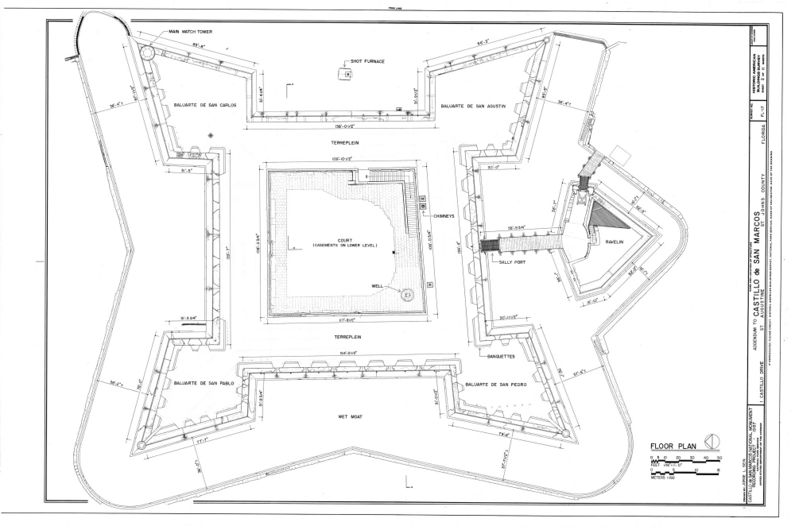
Current StatusThe Castillo de San Marcos National Monument. Period guns and mounts in place.
Sources:
Links: Visited: 16 Jan 2010 Picture Gallery
| ||||||
